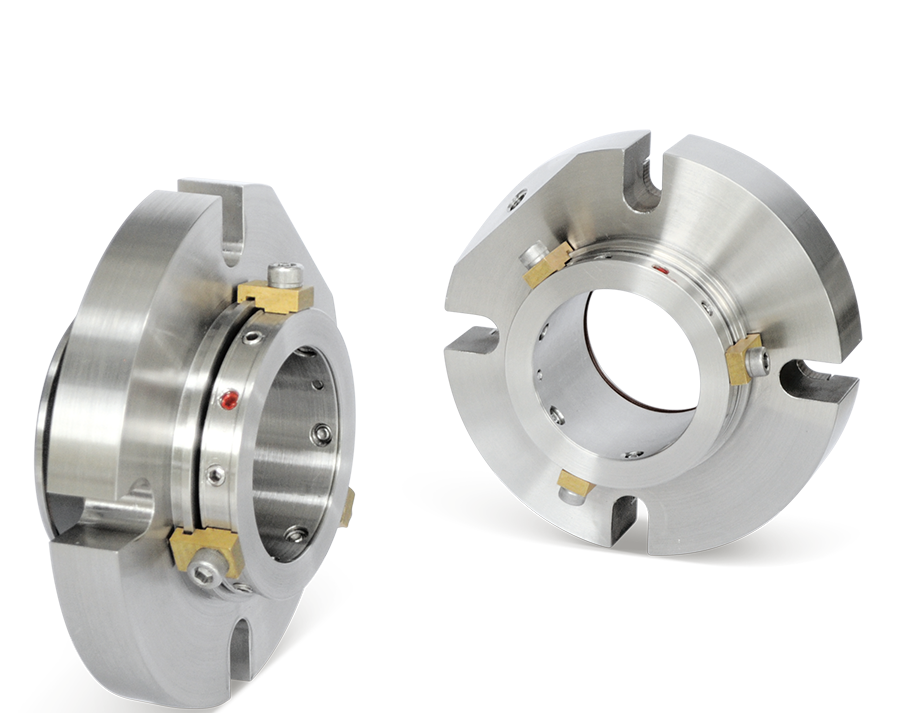Cyclone mechanical seal
Creating a clean and cool chamber for the sealing faces while directing particles outward.

Driven by fluid pressure, when the sealing faces open, particles enter between the rotating and stationary faces, rapidly wearing down the sealing surfaces.
This effect is comparable to sand getting into your eyes—imagine this happening 1,450 to 2,950 times per minute (the pump's rotation speed)!
Cyclone mechanical seals
- PowerThe motor's force is 100 times stronger than natural forces.
- AdaptabilityNo need to modify the existing pump.
- No Flushing RequiredTested under maximum normal production concentrations for paper, sand, gypsum, wastewater, and sugar, without flushing water and under vibration conditions.
- Precautionary MeasuresA flushing port is maintained for initial cleaning or protection during conversions.
Cyclone seals have been laboratory-tested under severe conditions: absence of flushing water, intentionally induced shaft vibrations, and near-maximum production concentrations.
Innovative design
- Cleaning and Cooling Effect in the ChamberThe Cyclone seal employs a self-cleaning mechanism to protect the seal faces. The inclined "ear" works in harmony with uniquely designed stationary parts to create a small cyclone directly above the seal faces, reducing wear and heat, thereby extending the faces' lifespan.
- Channeling Effect in the DuctThe back of the "ear" is configured in a specific geometric arrangement relative to the inclined stationary parts above it, creating a powerful induced fluid flow. This conical channel generates fluid movement that ejects particles back into the pump.
- Ejection Effect in the DuctThe configuration of the outlet nozzle in the ejection pipe structure creates an even larger cyclone in the stuffing box, moving particles toward the medium.
- Initial Port CleaningThe inclined port is positioned just above the back of the "ear," allowing flushing water to be used for initial cleaning or as an initial precaution.
